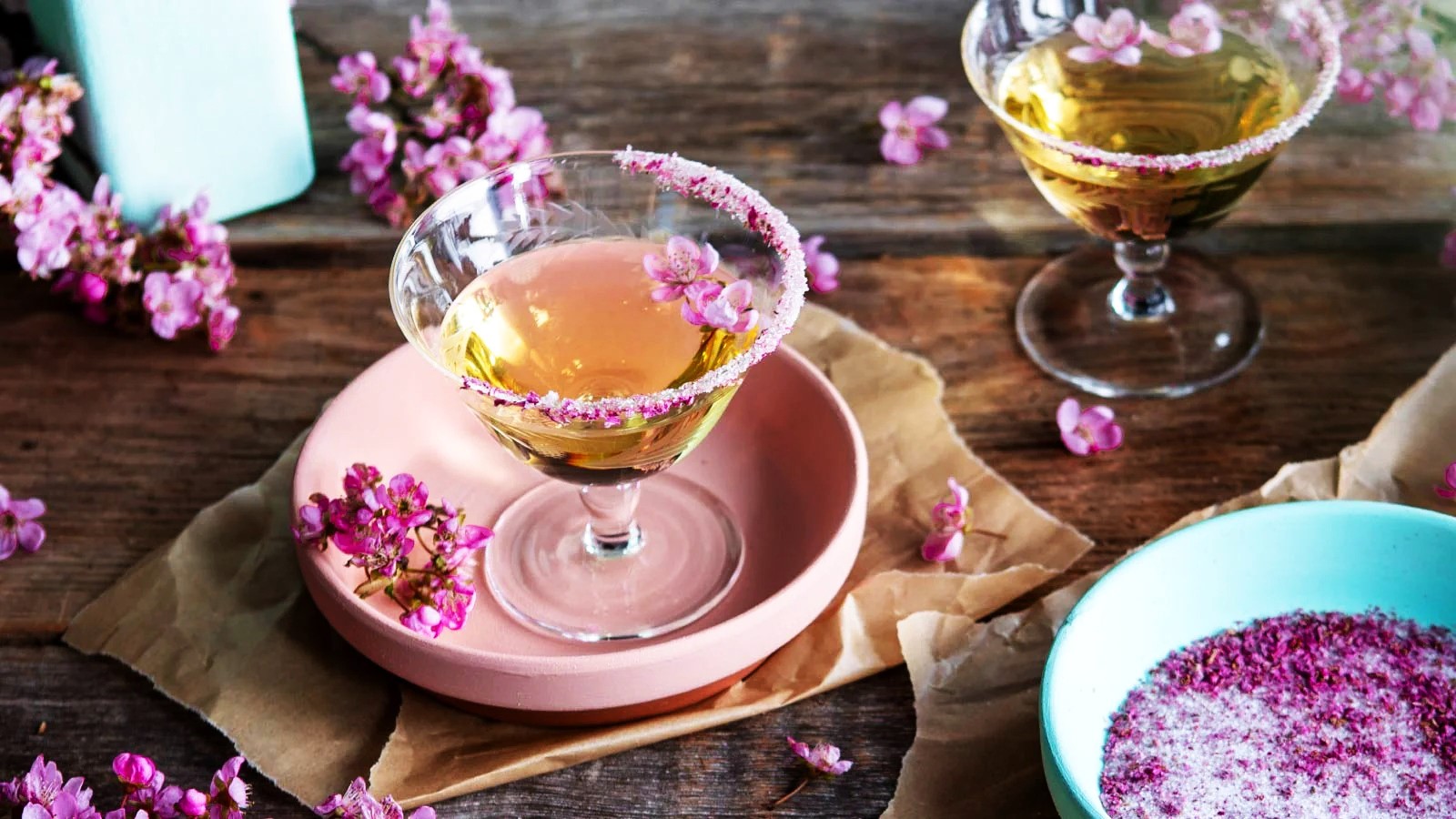
Cherry blossoms, with their delicate beauty and ephemeral nature, have captivated people around the world for centuries. These flowering trees, known as sakura in Japan, hold deep cultural significance and have become a symbol of the transient beauty of life. But there’s so much more to cherry blossoms than meets the eye.
In this article, we will delve into 14 fascinating facts about cherry blossoms that will not only surprise you but also deepen your appreciation for these enchanting flowers. From the origins of cherry blossom viewing to the significance of hanami parties, from the different varieties of cherry trees to the meanings behind the blossoms, we will uncover the tale of these mesmerizing blooms.
So, get ready to be amazed as we take a closer look at the world of cherry blossoms and discover the intriguing stories they hold.
Key Takeaways:
- Cherry blossoms symbolize beauty, renewal, and the fleeting nature of life in Japanese culture. Their short bloom period and variety of colors add to their allure and captivate people worldwide.
- Cherry blossoms have cultural significance, inspiring art, poetry, and festivals. They symbolize hope, resilience, and even have health benefits, making them a captivating and meaningful flower.
The Cherry Blossom is a Symbol of Beauty and Renewal
The delicate and ethereal beauty of the cherry blossom has made it a timeless symbol of beauty and renewal in Japanese culture. This iconic flower represents the fleeting nature of life and serves as a reminder to appreciate every moment.
Cherry Blossoms Have Cultural Significance in Japan
In Japan, the arrival of cherry blossoms, known as “sakura,” is a highly anticipated event. It marks the beginning of spring and is celebrated with hanami, or flower viewing parties, where people gather under the blooming trees to appreciate their beauty.
Cherry Blossoms Have a Short Bloom Period
The cherry blossom’s beauty is fleeting. The flowers typically bloom for only a week or two, making their appearance all the more cherished. This ephemeral quality adds to their allure and captures the hearts of people around the world.
Cherry Blossoms Come in a Variety of Colors
While the most well-known color for cherry blossoms is pink, they can also be found in shades of white, red, and even yellow. Each color variation adds a unique touch to the landscape and creates a mesmerizing visual display.
Many Cherry Blossom Trees Were Gifts from Japan
Cherry blossom trees have been gifted to various countries around the world as a symbol of friendship and peace. The most famous example is the National Cherry Blossom Festival in Washington, D.C., where thousands of trees were gifted by Japan.
The Oldest Cherry Blossom Tree is Over a Thousand Years Old
The Jindai-zakura, located in Japan, is believed to be the oldest cherry blossom tree in the world. It has been standing for over a thousand years and continues to bloom each spring, captivating visitors with its timeless beauty.
Cherry Blossoms are the National Flower of Japan
Cherry blossoms hold a special place in Japanese culture and are considered the national flower of Japan. They symbolize the ephemeral nature of life, beauty, and the appreciation of the present moment.
Each Year, Japan Forecasts the Cherry Blossom Blooming Dates
In Japan, the cherry blossom blooming forecast, known as “sakura zensen,” is eagerly awaited each year. It helps locals and tourists plan their visits to witness the magnificent cherry blossom spectacle.
Traditional Japanese Art Often Depicts Cherry Blossoms
Cherry blossoms have been a popular subject in traditional Japanese art for centuries. From ukiyo-e woodblock prints to intricate paintings, these delicate flowers are celebrated for their beauty and symbolism.
Cherry Blossoms Have Inspired Countless Poems and Songs
Cherry blossoms have a profound impact on artistic expression. They have inspired numerous poems, known as “haiku,” and songs, showcasing their enduring influence on Japanese culture and beyond.
Cherry Blossoms Have Different Meanings in Different Cultures
While cherry blossoms are mostly associated with Japanese culture, they hold different meanings in other cultures as well. In China, for example, they symbolize femininity and love, while in Korea, they represent purity and beauty.
Cherry Blossom Festivals Attract Millions of Visitors
Cherry blossom festivals around the world draw millions of visitors each year. From Japan’s Hanami festivals to the Cherry Blossom Festival in Washington, D.C., these events celebrate the beauty and cultural significance of the cherry blossom.
Cherry Blossom Trees Can Symbolize Hope and Resilience
Cherry blossom trees often serve as symbols of hope and resilience in times of adversity. Their blooming represents strength and the ability to overcome challenges, making them a powerful emblem for many.
Cherry Blossoms Have Health Benefits
In addition to their aesthetic appeal, cherry blossoms have been found to have health benefits. The fragrance of cherry blossoms can help reduce stress and promote relaxation, making them beneficial for mental well-being.
As you can see, the 14 fascinating facts about cherry blossoms reveal the rich symbolism and cultural significance associated with these captivating flowers. From their brief yet breathtaking bloom to their role as messengers of hope and beauty, cherry blossoms continue to inspire and captivate people around the world.
Conclusion
Cherry blossoms, with their stunning beauty and cultural significance, are truly a marvel of nature. From their origins in Japan to their widespread popularity around the world, these delicate flowers continue to captivate and inspire people everywhere. Whether you’re planning a trip to witness the cherry blossom season or simply appreciate their allure from afar, it’s clear that these blooms have a unique and enduring appeal. So next time you come across a cherry blossom tree in full bloom, take a moment to soak in the beauty and remember the fascinating facts you’ve learned about this enchanting flower.
FAQs
1. When do cherry blossoms typically bloom?
Cherry blossoms usually bloom during the spring season, with the exact timing varying depending on factors such as location and climate. In Japan, for example, the cherry blossom season typically occurs in late March to early April.
2. How long do cherry blossoms last?
The blooming period of cherry blossoms is relatively short, usually lasting for about one to two weeks. However, the exact duration can vary depending on weather conditions and the specific species of cherry tree.
3. Where can I see cherry blossoms outside of Japan?
Cherry blossoms can be found in various countries around the world, including the United States, Canada, the United Kingdom, and South Korea. Many cities host festivals and events to celebrate the blooming of cherry blossoms, providing ample opportunities to see them in full splendor.
4. What is the significance of cherry blossoms in Japanese culture?
Cherry blossoms, known as “sakura” in Japanese, hold deep cultural significance in Japan. They symbolize the transient nature of life and are often associated with beauty, renewal, and the arrival of spring. Hanami, the tradition of viewing cherry blossoms, is a cherished cultural practice in Japan.
5. Are there different types of cherry trees that produce blossoms?
Yes, there are numerous species of cherry trees that produce blossoms, including the popular Yoshino cherry, weeping cherry, and Kwanzan cherry. Each variety has its own unique characteristics and bloom times, adding to the diversity and beauty of cherry blossom season.
Was this page helpful?
Our commitment to delivering trustworthy and engaging content is at the heart of what we do. Each fact on our site is contributed by real users like you, bringing a wealth of diverse insights and information. To ensure the highest standards of accuracy and reliability, our dedicated editors meticulously review each submission. This process guarantees that the facts we share are not only fascinating but also credible. Trust in our commitment to quality and authenticity as you explore and learn with us.


